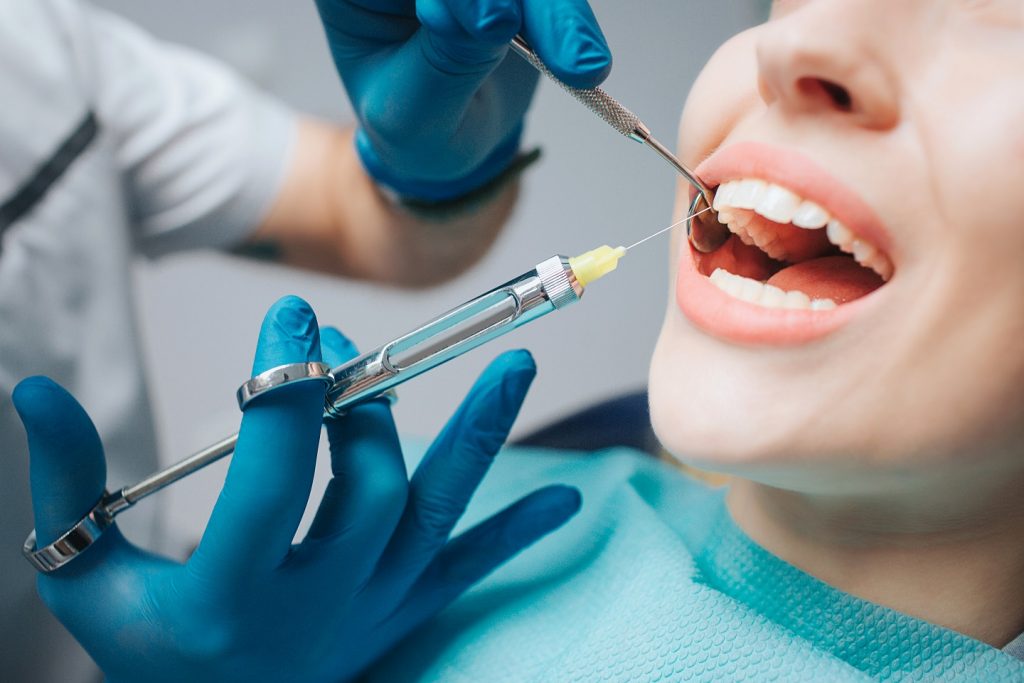Painless Dentistry

Your dental visit doesn’t have to be filled with overwhelming fear or dread!
For some patients undergoing dental or surgical procedures, the experience can result in stress and anxiety, while for others, severe dental phobia could be traumatising.
At Smileworks, your comfort and experience are important to us. We offer painless dentistry to help you manage your fears and anxieties when addressing your dental needs.
Painless dentistry uses local anaesthesia, sedation, or general anaesthesia to reduce discomfort during dental procedures.
Local Anaesthesia

Local anaesthetics are usually injected directly into the surgical site after a topical anaesthetic (numbing cream or gel) is applied.
It normally only takes a few minutes to lose sensation in the area where a local anaesthetic is given. After checking for numbness, the dentist will proceed with the necessary work. You won’t be able to feel any pain after having a local anaesthetic, although you may still feel some pressure or movement. The full sensation should return when the effect has worn off a few hours later.
Local anaesthesia is routinely used in a variety of dental procedures, from treating tooth decay and crowns to root planning and scaling for periodontitis.
Single Tooth Anaesthesia – The Wand
The Wand is a pain-free alternative to the traditional dental injection, and it is a computerised system that delivers precise local anaesthetic without the pain and anxiety of a dental needle or discomfort associated with the effects of extensive numbing.
The Wand replaces the traditional dental syringe to deliver anaesthetic solution to your gums through a fine needle attached to a pen-shaped handpiece.
Using computer-assisted technology, The Wand controls the anaesthetic flow rate and regulates the pressure of the injection to minimise the pain you may feel for a more pleasant dental treatment.
Intravenous (IV) Sedation
Intravenous (IV) sedation induces a deeper state of relaxation so that patients can manage longer or more complex procedures.
Sedatives are given intravenously so the drugs work very faster. Because it is administered intravenously, the anaesthesiologist can adjust the level of intravenous sedation as needed. This makes it easier to tailor the amount of sedative used to each individual patient and reduces the risk of complications and side effects.
Most patients have little or no memory of the procedure when intravenous sedation was used. Intravenous sedation is administered by an anaesthesiologist who monitors the patient throughout the procedure.
General Anaesthesia (GA)
General Anaesthesia (GA) is used to facilitate procedures requiring more extensive dental work and/or major surgeries. They are usually done in a day surgery centre setting.
With GA, the patient would be in a state of complete unconsciousness while the procedures are being carried out. Our oral surgeon and an anaesthesiologist will monitor your vital signs closely. This state can last for up to several hours after treatment under GA. When the procedure is complete, you will rest under observation until you regain consciousness, before being allowed to go home.
You should discuss with your dentist and understand which method works for you, before making an informed decision.
